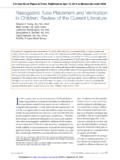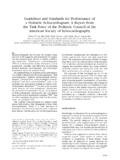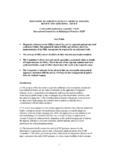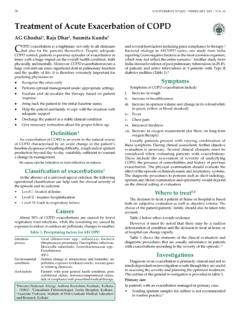Transcription of THORACIC RADIOGRAPHY - cardiospecialist.co.uk
1 UNISVET Itinerario di Cardiologia del cane e del gatto Weekend Dr Luca Ferasin ( ) 1 THORACIC RADIOGRAPHY Topics 1. Radiographic techniques 2. Assessment of the cardiovascular system 3. Assessment of the respiratory system 4. Recognition of congestive heart failure in dogs and cats 5. Radiographic abnormalities in common cardiovascular disease Key learning objectives: At the end of this module delegates should be able to: obtain THORACIC radiographs of diagnostic quality become familiar with interpretation of normal THORACIC radiographs recognise signs of congestive heart failure recognise non-cardiac radiographic abnormalities of the thorax and common artefacts become familiar with selective and non-selective angiography UNISVET Itinerario di Cardiologia del cane e del gatto Weekend Dr Luca Ferasin ( ) 2 THORACIC RADIOGRAPHY THORACIC RADIOGRAPHY is an important diagnostic aid in cardio-respiratory patients.
2 Interpretation depends not only on the knowledge and experience of the clinician but also on the quality of the image obtained. Assessment of the pulmonary fields, in particular, may be difficult if the quality of the film is not adequate. Many factors are involved in obtaining good quality radiographs. It is not the intention of this course to fully cover the radiographic examination. Please refer to specialist textbooks for further details. Digital RADIOGRAPHY has dramatically changed modern radiology. One of the major advantages of digital RADIOGRAPHY is the ability to process the images after they have been recorded. Various forms of digital processing can be used to change the characteristics of the digital images. Operators can change and optimise the contrast and enhance visibility of detail in some radiographs, in particular vascular and interstitial patterns.
3 Other important advantages of digital RADIOGRAPHY , compared to traditional films, include: 1. Rapid storage and retrieval 2. Less physical storage space 3. Ability to copy and duplicate without loss of image quality 4. Possibility to transmit images via internet to specialists for second opinion 5. Possibility to download images for reports and presentations 6. Ability to measure accurately length, area, circumference of THORACIC structures and lesions. Unfortunately, less than 30% of veterinary practices are equipped with digital RADIOGRAPHY units at present (year 2010). This is primarily due to the relatively high cost of digital units, although they may become significantly cheaper in the near future. Practical tips to obtain THORACIC radiographs of diagnostic quality (many tips apply to standard [film] radiology): Short exposure time to minimise motion artefacts 1.
4 Exposure at peak of inspiration (very difficult with tachypnoeic patients) 2. Rare earth intensifying screens (to reduce exposure time) UNISVET Itinerario di Cardiologia del cane e del gatto Weekend Dr Luca Ferasin ( ) 3 3. Automatic processing 4. Avoidance of grids (they require longer they increase contrast) 5. Sedation may improve the respiratory pattern and reduce anxiety during the procedure 6. Sedation may improve positioning 7. A full set of sandbags, troughs, and foam wedges will improve positioning 8. General anaesthesia is sometimes required to obtain diagnostic images of the lungs. 9. Manual inflation under GA will increase lung details (careful inflation for suspected bullae, emphysema, etc) 10. Ventro-dorsal views are ideal to evaluate lung patterns; however they are difficult to obtain without deep sedation or general anaesthesia.
5 11. Dorso-ventral (or ventro-dorsal) views should be taken before lateral views to avoid artefacts. 12. Dog s neck should be extended to avoid dorsal kinking of the trachea Assessment of the cardio-vascular system Cardiac shape and size Assessing the cardiac shape and size is one of the most challenging parts of the THORACIC radiograph examination. A reliable assessment can be achieved in three ways: 1) comparison library 2) mental library 3) vertebral heart size, score, system (VHS) Assessing the cardiac shape and size by comparison library means comparing a THORACIC radiograph with one obtained in a normal dog of the same breed, age and size. This requires a vast image archive that is not always available in practice. A nice image archive has been published by Boehringer Ingelheim and is available both as hard copy and interactive CD-Rom.
6 Another important use of a comparison library is for monitoring the progression of the disease in the same patient. A mental library is a mental comparison with cases seen previously. This requires a long experience in radiographic reading and is obviously affected by a strong subjective assessment. Nevertheless, experienced operators can reliably assess size and shape of the heart using their mental library . Vertebral Heart Size (VHS) is a number that normalises heart size to body size using mid- THORACIC vertebrae as units of measure. Various authors also have called VHS an acronym for vertebral heart UNISVET Itinerario di Cardiologia del cane e del gatto Weekend Dr Luca Ferasin ( ) 4 score, vertebral heart sum or the vertebral heart system. VHS was introduced by Dr Buchanan in 1991 and a peer-reviewed article was published in 1995 (JAVMA 206:194-199).
7 Since then, it has become the standard indicator of radiographic heart size in dogs and cats. VHS should not be affected by breed, age and gender, although variations exist amongst different canine breeds. Normal VHS is < [dogs] and < [cats]. A thorough tutorial on the use of VHS is available at: It is important to remember that differences among normal hearts of varying canine breeds or differences between hearts radiographed at inspiration and expiration ARE OFTEN GREATER than the differences among normal and diseased hearts (Suter & Gomez 1987). In different canine breeds, the heart shape varies depending on their chest morphology. In lateral view, the chest morphology can be classified as normal, shallow and deep and, in dorso-ventral view, as normal narrow and barrel. According to this classification we can observe the following types: Normal-Normal: eg.
8 Labrador retrievers Lateral view: the heart is mildly leaning cranially and occupies approximately 2/3 of the hight of the chest DV view: the heart occupies approximately 2/3 of the width of the chest Normal-Narrow: eg. Greyhounds Lateral view: the heart is mildly leaning cranially and occupies approximately 2/3 of the hight of the chest DV view: the heart occupies more than 2/3 of the width of the chest Shallow-Normal: eg. Yorkshire terriers Lateral view: the heart appears globoid in shape and presents an increased sternal contact compared to a normal depth chest. DV view: the heart occupies approximately 2/3 of the width of the chest Shallow-Narrow: Basset hounds Lateral view: the heart appears globoid in shape and presents an increased sternal contact compared to a normal depth chest. DV view: the heart occupies more than 2/3 of the width of the chest UNISVET Itinerario di Cardiologia del cane e del gatto Weekend Dr Luca Ferasin ( ) 5 Shallow-Barrel: eg.
9 French Bulldogs Lateral view: the heart appears globoid in shape and presents an increased sternal contact compared to a normal depth chest. DV view: the heart occupies less than 2/3 of the width of the chest Deep-Narrow: eg. Irish setters Lateral view: the heart appears in upright position, almost perpendicular to the sternum. DV view: the heart occupies more than 2/3 of the width of the chest Factors affecting findings on THORACIC RADIOGRAPHY Effect of age Possible radiographic variations in old cats (>10y) increased sternal contact with no changes in heart size (40%) aortic bulge (DV) (30%) fat infiltration of the pericardium (fake cardiomegaly) Possible radiographic variations in old dogs (>8y) fat infiltration of the pericardium (fake cardiomegaly) bronchial pattern caused by mineral deposition in the bronchial wall increased interstitial pattern Effect of obesity Increased interstitial pattern Tortuosity of the THORACIC aorta Elevation of the cardiac silhouette from the sternum Effect of positioning THORACIC width is significantly larger on the VD projection than on the DV projection (78% of subjects)
10 Angle of divergence formed by the principal bronchi is significantly larger on the VD than DV (80% subjects) A cardiac silhouette bulge at 1 to 2 o'clock may be apparent on VD but not on DV (22% of subjects) UNISVET Itinerario di Cardiologia del cane e del gatto Weekend Dr Luca Ferasin ( ) 6 Descending aorta is more visible at the 4 to 5 o'clock cardiac silhouette level on the DV projection and laterally at the T8 level on lateral projections. The CVC is better seen on VD and lateral projections. The oesophagus is visible as soft tissue opacity in lateral views in large dogs with normal THORACIC conformation in 35 per cent of cases. Flexion of the neck may cause dorsal kinking of the trachea in the cranial thorax Effect of respiration Inspiration: clear dark lungs diaphragm moves caudally straight caudal vena cava upright heart Expiration: hazy denser lungs diaphragm moves cranially inclined CVC rounded heart SYSTEMATIC EXAMINATION OF THORACIC RADIOGRAPHS THORACIC radiographs should always be examined systematically, following a sort of mental protocol.





